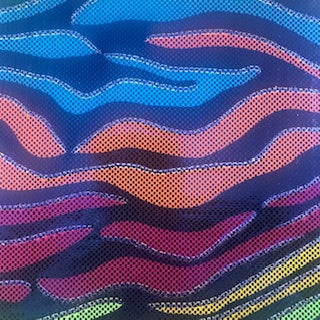Swimwear fabrics, known for their durability, stretch, and water-resistant properties, require specific sewing techniques to ensure the finished garment fits well and performs efficiently. Whether you're creating a simple bikini or a complex one-piece swimsuit, mastering these techniques can make a significant difference. Here, we explore some essential sewing methods and offer visual examples to guide you through the process.
1. Choosing the Right Needle and Thread
For swimwear fabrics, using a ballpoint or stretch needle is crucial. These needles have a rounded tip that glides between the fabric threads rather than piercing them, preventing runs and tears. Polyester thread is recommended as it offers the necessary stretch and durability.
2. Stitch Selection 
Using the right stitch is key to ensuring the seams remain flexible and strong. The most commonly used stitches for swimwear fabrics include:
-
Zigzag Stitch: A narrow zigzag stitch allows the fabric to stretch while maintaining the seam's integrity. It is ideal for joining seams and finishing edges.
-
Triple Stretch Stitch: This stitch is a straight stitch that goes forward, backward, and then forward again. It provides a highly secure seam that can stretch without breaking.
3. Seam Finishing Techniques
Swimwear fabrics tend to fray, so finishing the seams properly is important. Here are some techniques:
-
Surging: A serge trims the fabric edge while overcasting it with thread, creating a clean and professional finish. It’s especially useful for side seams and armholes.
-
Fold Over Elastic (FOE): FOE is a versatile elastic that can be used to finish edges like necklines, armholes, and leg openings. It provides a neat finish and adds extra support to the garment.

4. Elastic Insertion
Swimwear requires elastic to ensure the garment stays in place. There are various methods for inserting elastic:
-
Casing Method: Create a fabric casing by folding over the edge of the fabric and sewing it down, then threading the elastic through the casing.
-
Sewn-Down Elastic: This involves sewing the elastic directly onto the fabric edge, stretching the elastic slightly as you sew to ensure a snug fit.

5. Topstitching
Topstitching not only adds a decorative element but also secures the seams and elastic in place. A twin needle can be used for a professional-looking double row of stitches, which also maintains the stretchiness of the fabric.









